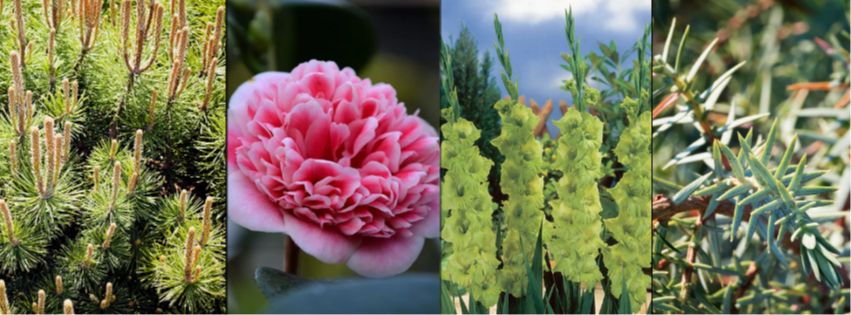How to Grow Shrubs
Shrubs bring lasting structure and vibrant colour to gardens throughout the year. Many varieties offer beautiful flowers, delightful fragrances, eye-catching foliage, and colorful fruits or berries. These woody plants come in a wide range of sizes and serve various purposes, such as focal points, hedges, ground cover, and backdrops. Additionally, many shrubs are beneficial for wildlife, offering essential food and shelter for birds and other creatures.
.png)
Choosing shrubs for hedging
Many shrubs can be used for hedging, creating an attractive, wildlife-friendly boundary or screen. Your range of options includes:
Evergreen or deciduous.
Colourful flowers, fruits and foliage in various seasons.
Informal or formal styles, and low or high maintenance.
Tall, medium or low-growing.
When to Plant
The ideal time to plant deciduous shrubs is between autumn and early spring, as long as the soil is not excessively wet or frozen. Evergreen plants are best planted in either autumn or spring.
Container-grown shrubs can be planted throughout the growing season but avoid planting during hot or dry weather to prevent dehydration.
Where to Plant
While most shrubs thrive in open, sunny locations, there are varieties that also grow well in shady spots. Check out our guide to shrubs for shady areas for more information.
Shrubs from warmer climates may struggle in cold winters and require shelter, such as a wall or greenhouse, along with well-drained soil. Be sure to check the plant label for information on the shrub's hardiness. You can also refer to our guide to growing wall shrubs for more details.
Some shrubs, like rhododendrons and camellias, require acidic soil and will not thrive in dry, alkaline, or limed soils.
Prepare Your Soil
Since shrubs are long-lived plants, it's important to enrich the soil before planting. Add plenty of well-rotted garden compost or manure to improve soil fertility, structure, and moisture retention. Compost, made from decomposed plant matter, enhances the soil and supports healthy plant growth. For container plants, you can also use seed or potting compost, which is available commercially in a variety of peat-free options or can be mixed at home using ingredients like loam, composted bark, coir, and sand.
.png)
Watering
Different shrubs have varying care requirements, but there are many easy-to-maintain options.
Newly planted shrubs should be watered consistently for the first two years to help them establish. Once they are well-established, most shrubs can manage without extra watering, except during hot, dry periods.
Shrubs planted against walls may require additional watering, as the wall could shelter them from rainfall.
Shrubs in containers need regular watering, especially during the summer months.
Pruning
helps maintain shrubs' health, encourages productivity, and enhances their appearance, while also controlling their size. It can also highlight a shrub’s most attractive features, such as vibrant stems or large leaves. However, different shrubs have varying pruning needs, so it’s important to check their specific requirements.
Hedges require regular trimming to stay tidy and maintain the desired height and width.
